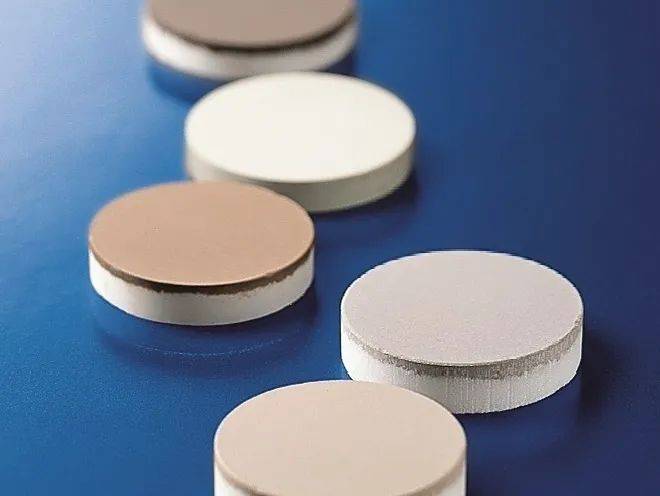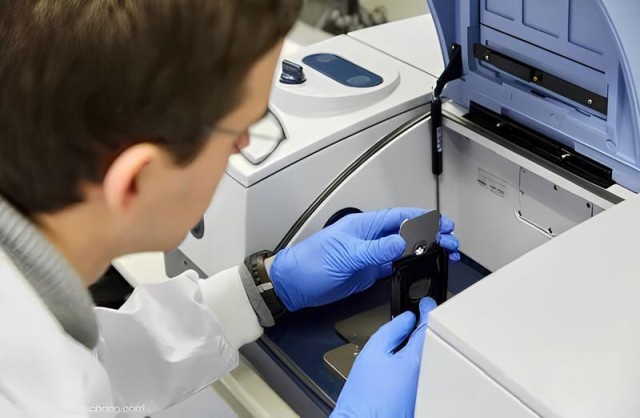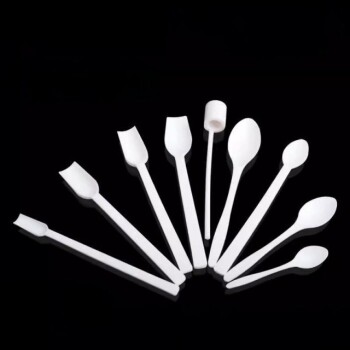Introduction to Sample Preparation
Importance of Proper Sample Preparation
Infrared spectra are indispensable for qualitative identification, and the quality of these spectra hinges on the meticulousness of sample preparation methods. Proper preparation ensures that the resulting data is not only accurate but also reproducible, thereby enhancing the reliability of the analysis.
To achieve high-quality spectra, it is essential to reduce heterogeneity in samples. This means ensuring that the analysis is representative of the entire population, thereby eliminating discrepancies that could arise from varying sample compositions. Consistency is key; by minimizing variability, you can be confident that each sample preparation process yields results that are comparable and reliable.
Moreover, proper sample preparation helps eliminate interference from impurities and contaminants. This is crucial as these elements can skew the results, leading to inaccurate conclusions. By meticulously preparing samples, you can ensure that the analysis focuses solely on the target analytes, enhancing the overall precision of the experiment.
Lastly, sample preparation can significantly increase sensitivity. This means that with the right techniques, you can detect trace levels of analytes that might otherwise go unnoticed. This heightened sensitivity is particularly valuable in fields where minute quantities of substances can have significant implications.
In summary, the importance of proper sample preparation cannot be overstated. It is the cornerstone of obtaining high-quality infrared spectra, which in turn supports accurate and reliable qualitative identification.

Factors Influencing Sample Preparation
When preparing a sample for analysis, several critical factors must be considered to ensure the accuracy and reliability of the results. These factors encompass both the intrinsic properties of the sample and the specific goals of the experiment.
Firstly, the state of the sample plays a pivotal role. Whether the sample is a liquid, solid, or gas, its physical and chemical properties will dictate the most suitable preparation method. For instance, a liquid sample with high viscosity may require a different approach compared to a low-viscosity liquid. Similarly, solid samples may necessitate techniques like potassium bromide tabletting or pyrolysis, depending on their characteristics.
Secondly, experimental objectives are paramount. Researchers may aim to obtain specific molecular information, study interactions, or detect trace levels of analytes. Each objective necessitates a tailored approach to sample preparation. For example, if the goal is to enhance sensitivity, techniques that minimize interference and reduce heterogeneity will be prioritized.
Additionally, safety protocols and sample handling practices are non-negotiable. Proper labeling, storage, and transportation are essential to maintain sample integrity. Safety measures, including the use of Personal Protective Equipment (PPE), must be rigorously followed, especially when dealing with milling and grinding equipment.
Lastly, budget considerations and application-specific needs should be balanced. While cost-effectiveness is important, it should not compromise the quality of results. Researchers must find the right equilibrium between budget constraints and the desired outcome, ensuring that the chosen method is both efficient and effective.
In summary, effective sample preparation hinges on a comprehensive understanding of the sample's properties, clear experimental goals, adherence to safety standards, and strategic cost management.
Specific Sample Preparation Methods
Liquid Samples
When preparing liquid samples for infrared spectroscopy, the choice of method is influenced by several key properties, including boiling point, viscosity, and transparency. These properties determine the most suitable techniques to ensure accurate and reliable spectral data.

One common method is the use of sealed absorption cells. These cells are particularly effective for volatile liquids, as they prevent evaporation and maintain the sample's integrity during analysis. The sealing process ensures that the sample remains at a consistent concentration, which is crucial for obtaining reproducible spectra.
For samples with higher viscosity, the capillary layer liquid film method is often employed. This technique involves creating a thin, uniform film of the liquid on the inner surface of a capillary tube. The thin film reduces scattering and enhances the clarity of the spectrum, making it ideal for analyzing viscous liquids without significant degradation of the spectral quality.
Another widely used approach is the solution absorption cell method. This method is suitable for both transparent and slightly opaque liquids. By dissolving the sample in a suitable solvent, the solution can be analyzed in a standard absorption cell. The choice of solvent is critical, as it should not interfere with the sample's spectrum and should have a high transmittance in the infrared region.
| Method | Suitable for | Key Advantage |
|---|---|---|
| Sealed Absorption Cells | Volatile liquids | Prevents evaporation and maintains sample integrity |
| Capillary Layer Liquid Film | High viscosity liquids | Reduces scattering and enhances spectral clarity |
| Solution Absorption Cell | Transparent/opaque liquids | Allows analysis of dissolved samples without interference |
Each of these methods has its unique benefits and is selected based on the specific characteristics of the liquid sample being analyzed. Proper selection ensures that the resulting infrared spectra are of high quality, providing accurate and meaningful data for further analysis.
Solid Samples
When preparing solid samples for infrared spectroscopy, several methods are employed to ensure optimal results. These techniques are meticulously chosen based on the sample's physical and chemical characteristics, aiming to yield clear and informative spectra.
One of the most common methods is potassium bromide tabletting. This technique involves mixing the solid sample with potassium bromide powder and pressing the mixture into a disc under high pressure. The resulting disc is then analyzed in the infrared spectrometer. This method is particularly effective for samples that are difficult to dissolve or are hygroscopic, as it minimizes water interference and provides a uniform sample presentation.
Another widely used approach is the halide crystal smear method. This involves grinding the solid sample into a fine powder and then smearing it onto a halide crystal, such as a sodium chloride or potassium bromide plate. The sample is then analyzed in the spectrometer. This method is advantageous for samples that are sensitive to heat or pressure, as it avoids the need for mechanical pressing.
Additionally, pyrolysis is a method often employed for solid samples that require decomposition before analysis. In this technique, the solid sample is heated in a controlled manner to produce a gas or vapor, which is then analyzed. Pyrolysis is particularly useful for studying complex organic materials, as it allows for the identification of volatile decomposition products that can provide insights into the sample's structure and composition.
Each of these methods is tailored to address specific challenges associated with different types of solid samples, ensuring that the resulting infrared spectra are of high quality and provide valuable analytical information.
Gas Samples
For the analysis of gas samples, particularly those with low concentrations, long optical path gas absorption cells are the preferred method. These cells are designed to maximize the interaction between the sample and the infrared light, thereby enhancing the sensitivity and accuracy of the spectroscopic measurements.
The use of long optical paths is crucial because it allows for the detection of minute concentration changes that would otherwise be undetectable with shorter paths. This is particularly important in environmental monitoring, where trace gases like methane or carbon dioxide need to be accurately quantified.
| Cell Type | Path Length | Application |
|---|---|---|
| Standard Gas Cell | 10 cm | General gas analysis |
| Multi-pass Gas Cell | 100 cm | Low concentration gases |
| White Cell | Up to 20 m | Ultra-low concentration gases |
The choice of cell length is often dictated by the specific requirements of the analysis, such as the need for high sensitivity or the nature of the gas being studied. For instance, a White Cell, which can have optical paths extending up to 20 meters, is ideal for detecting ultra-low concentrations of gases in atmospheric studies.
In summary, the selection of an appropriate gas absorption cell with a suitable optical path length is essential for obtaining reliable and accurate infrared spectra of gas samples, especially when dealing with low concentration samples.
Advanced Techniques
Potassium Bromide Triangle Enrichment
The potassium bromide triangle enrichment technique is a specialized method designed for handling trace samples that contain inorganic impurities. This technique is particularly effective in filtering and enriching these samples, ensuring that the impurities are concentrated to a detectable level. By focusing on the selective enrichment of inorganic components, this method enhances the accuracy and reliability of infrared spectroscopy analysis for trace elements.

In practice, the potassium bromide triangle enrichment involves a meticulous process of sample filtration and concentration. This process is crucial for samples where the inorganic impurities are present in extremely low concentrations, making them difficult to detect using conventional methods. The enrichment step not only increases the concentration of these impurities but also removes any organic matrix that could interfere with the spectroscopic analysis.
The technique leverages the unique properties of potassium bromide, which is highly effective in binding and isolating inorganic species. This binding process allows for the selective enrichment of inorganic impurities, which can then be analyzed more precisely using infrared spectroscopy. The result is a more detailed and accurate spectral profile, providing valuable insights into the composition and nature of the inorganic impurities present in the sample.
By employing the potassium bromide triangle enrichment method, researchers can overcome the challenges associated with analyzing trace samples, particularly those with low concentrations of inorganic impurities. This technique not only enhances the detection capabilities of infrared spectroscopy but also ensures that the analysis is conducted with a high degree of precision and reliability.
Attenuated Total Reflection (ATR)
Attenuated Total Reflection (ATR) is a sophisticated technique particularly well-suited for the analysis of thin coatings and non-destructive evaluation of a wide array of materials. This method stands out due to its ability to measure powder samples directly, eliminating the need for mixing them with mediums such as KBr or liquid paraffin, which are typically required in other infrared spectroscopy methods.
The ATR process involves pressing the sample against a high-refractive-index prism, commonly made of zinc selenide (ZnSe) or germanium (Ge). Infrared light is then directed into the prism, where it undergoes total internal reflection. This reflection allows for the capture of the infrared spectrum, providing detailed information about the sample's surface characteristics.
Compared to traditional methods, ATR offers several advantages. It is particularly effective in obtaining infrared data from the surface of powder samples, making it invaluable for surface analysis and thin layer studies. However, it is essential to exercise caution with the wavenumber dependency of the absorption peak intensity. Additionally, the peak deformation towards the first-order differential form can occur due to the anomalous dispersion of the refractive index, especially in inorganic and other high-refractive-index samples.
In summary, ATR is a powerful tool in infrared spectroscopy, offering a direct and non-destructive approach to analyzing a variety of materials, particularly those with thin coatings and complex surface properties.
Hot Pressing Film Formation
Hot pressing film formation is a sophisticated technique primarily employed to investigate changes in the crystallinity of polymers. This method involves the precise control of both temperature and pressure, which are critical factors in the process. The controlled heating ensures that the polymer molecules are heated to a specific temperature where they exhibit optimal flow characteristics, facilitating the formation of a uniform film.
The pressing component of the technique is equally important, as it helps to eliminate voids and ensure a dense, homogeneous film. This is achieved by applying a specific pressure that is carefully calibrated based on the type of polymer being studied. The combination of heating and pressing allows for the creation of films with consistent thickness and structure, which are essential for accurate spectroscopic analysis.
In the context of infrared spectroscopy, the uniformity and structural integrity of the film are paramount. These properties enable the technique to provide detailed insights into the molecular structure and crystallinity of the polymer, making it a valuable tool in polymer research and development.
Related Products
- No Demolding Lab Infrared Press Mold for Laboratory Applications
- Lab Infrared Press Mold
- Automatic Laboratory Hydraulic Press for XRF & KBR Pellet Press
- XRF & KBR plastic ring lab Powder Pellet Pressing Mold for FTIR
- kbr pellet press 2t
Related Articles
- The Benchtop KBr Pellet Press: An Efficient Tool for Laboratory Use
- Simplify Sample Preparation with FTIR Pellet Press
- Pressing Powder Samples and Molding Polymer Films: A Comprehensive Guide
- Infrared Press Mold Techniques for Non-Demolding Applications
- How To Turn XRF analysis sample preparation Into Success








